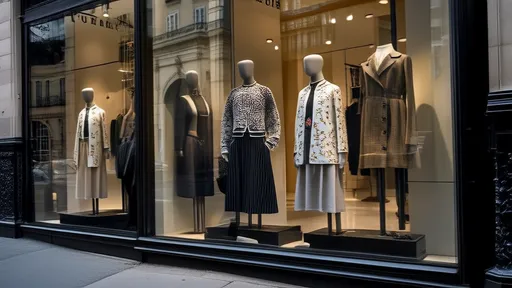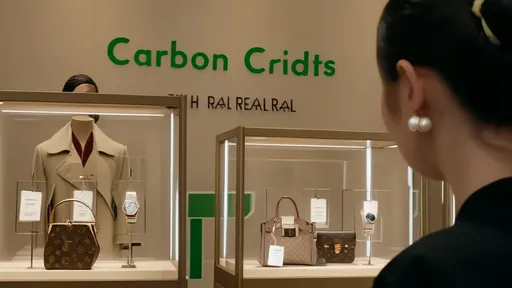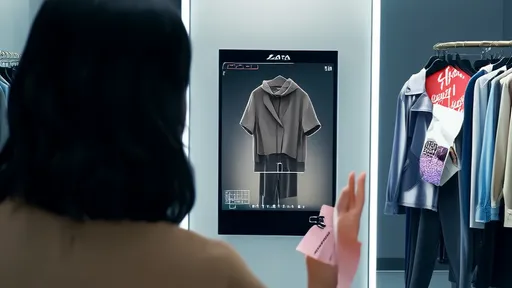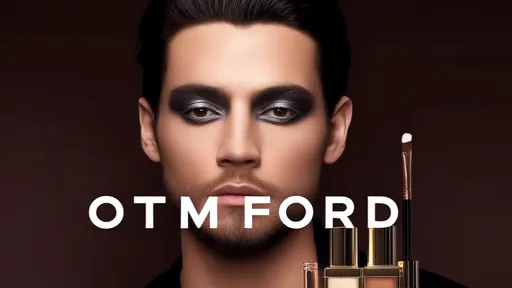The recent Paris Fashion Week witnessed a bold aesthetic statement from Chinese designer brands, but their embrace of what critics call "techno-Orientalism" has sparked heated debates about cultural representation, technological fetishization, and the West’s enduring fascination with a futuristic—and often reductive—vision of Asia.
Walking through the labyrinthine shows of emerging Chinese designers, one couldn’t escape the neon-lit runways, garments embedded with LED circuits, and models adorned with headpieces resembling cybernetic headdresses. The collections pulsated with a distinct blend of traditional Chinese motifs—think dragon scales rendered in 3D-printed mesh or QR code patterns woven into silk brocade—all amplified through a high-tech lens. While undeniably visually arresting, this aesthetic approach has drawn scrutiny for its potential reinforcement of Orientalist tropes repackaged for the digital age.
At the heart of the controversy lies the term "techno-Orientalism," a concept coined by scholars to describe Western projections of Asia as a monolithic, hyper-technological future-scape. Historically, Orientalism framed the East as exotic and backward; its techno counterpart, critics argue, flips the script while maintaining similar reductivism. Asia becomes a cipher for cold efficiency, dystopian glamour, and dehumanized progress—aestheticized but stripped of nuanced cultural context. The worry is that Chinese designers, in their eagerness to claim space in global fashion’s avant-garde, might inadvertently cater to this fetishization.
Some collections leaned heavily into cyborg-inspired silhouettes, with one show featuring models whose faces were obscured by translucent screens displaying algorithmic distortions of Peking opera masks. Another designer sent out jackets with circuitry that "malfunctioned" mid-walk, emitting glitchy renditions of folk songs. These choices, while innovative, prompted questions: Is this a subversion of techno-Orientalist imagery or an uncritical adoption of it? The line between reclamation and replication seemed frustratingly thin.
Defenders of the trend counter that these designers are actively dismantling stereotypes by weaponizing them. By exaggerating and recontextualizing Western expectations of Chinese futurism, they argue, the collections become parodic—a sly commentary on the West’s own anxieties about technological ascendancy. One designer’s statement explicitly referenced this, with notes about "giving them the robot fantasy they crave, then making it bleed real ink." The garments, in this light, transform into cultural Trojan horses.
Yet the commercial realities complicate matters. Several of the most talked-about shows were backed by European conglomerates eager to capitalize on China’s growing influence in luxury markets. This raises uneasy questions about who ultimately benefits from these aesthetics. When a French buyer praises a collection for being "so authentically futuristic-Chinese," what exactly is being commodified? The tension between creative autonomy and market demands hangs thick over the neon haze.
Parallel to this runs a quieter but persistent thread of dissent from within China’s fashion community. A contingent of designers is deliberately moving toward what they term "unplugged Chinoiserie"—garments that reference tradition through craftsmanship rather than digital spectacle. Their work emphasizes the irregularities of hand-dyed indigo, the whisper of ramie fabric, and the asymmetry of scholar’s rocks. This contrast highlights the diversity of Chinese design voices often flattened by the techno-Orientalist narrative.
The debate extends beyond aesthetics into deeper questions of agency. As one Shanghai-based critic noted, "The problem isn’t using technology—it’s letting technology use you." When algorithms dictate trends and Western buyers reward certain stereotypes, even rebellion can become predictable. The most compelling collections at Paris Fashion Week may have been those that acknowledged this trap, like the designer who paired blockchain-inspired patterns with sleeves deliberately frayed by human hands—a tactile reminder of the bodies behind the bytes.
What becomes clear is that there’s no singular "Chinese futurism" in fashion, just as there’s no monolithic West. The techno-Orientalism controversy ultimately reflects broader growing pains as global fashion’s power structures shift. For Chinese designers, the challenge isn’t merely about rejecting or embracing certain aesthetics, but navigating the fraught terrain where cultural identity collides with commerce, where innovation risks becoming another kind of cage. As the neon lights dim on another Paris Fashion Week, these conversations—sparking, short-circuiting, and evolving—are far from over.

By /Jul 24, 2025

By /Jul 24, 2025

By /Jul 24, 2025

By /Jul 24, 2025

By /Jul 24, 2025

By /Jul 24, 2025

By /Jul 24, 2025

By /Jul 24, 2025

By /Jul 24, 2025

By /Jul 24, 2025

By /Jul 24, 2025

By /Jul 24, 2025

By /Jul 24, 2025

By /Jul 24, 2025

By /Jul 24, 2025

By /Jul 24, 2025

By /Jul 24, 2025

By /Jul 24, 2025